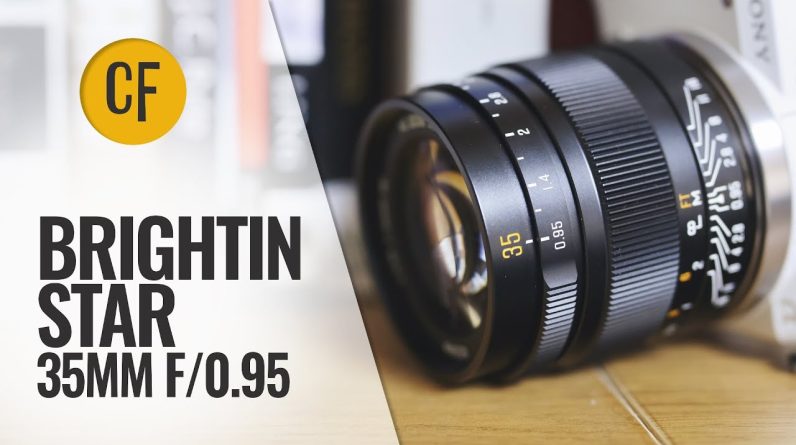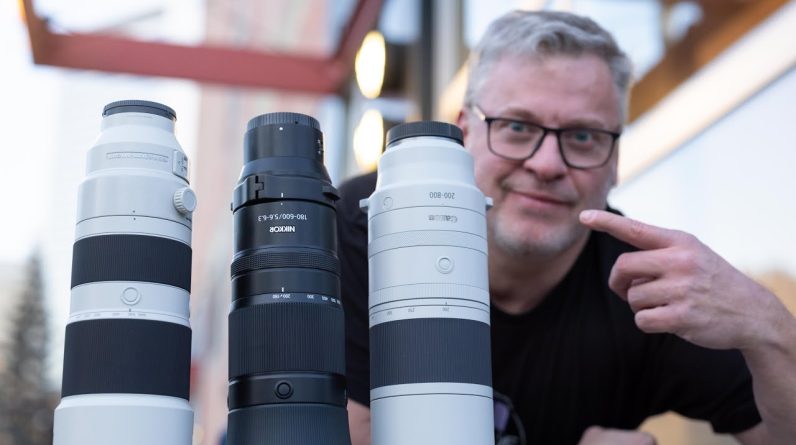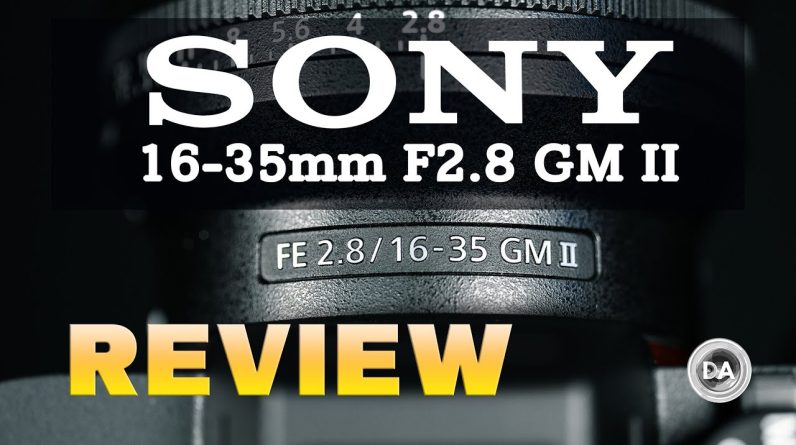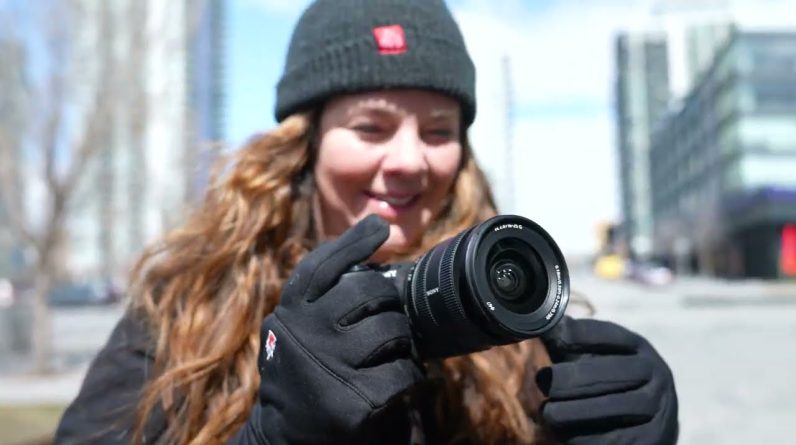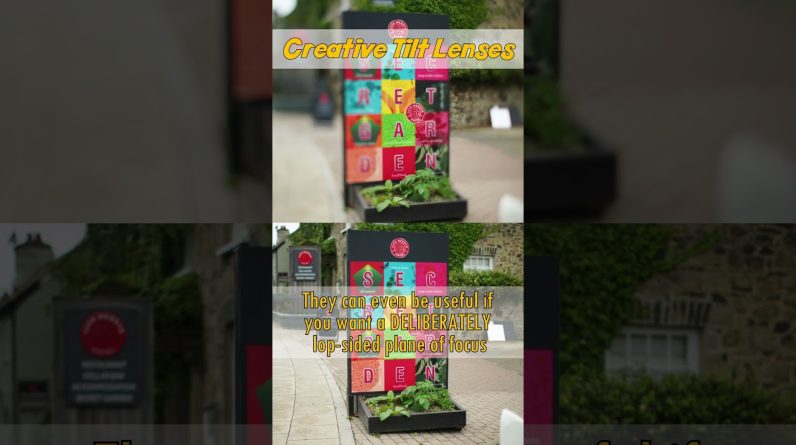[Music] Hi I'm Dustin Abbott and I'm here today To give you a review of the newest of Canon's fullframe kit lenses and that is The RF 24 to 50mm f4.5 to 6.3 is STM Lens this is developed initially as a Kit lens to go along with the Canon EOS R8 and and it is cheap it's lightweight And obviously it is probably not just For the R8 but for future budget Fullframe cameras as well MSRP on this Lens if you buy the lens alone is $299 you can get it for about $200 in Kit with the EOS R8 at the moment now as We're going to see today it does have Some serious Optical flaws but it does Offer up good autofocus it has pretty Good sharpness and it has an image Stabil stabilizer which is obviously Important for cameras like the EOS R8 That don't have in body image Stabilization so the question to be Answered is this lens worth getting if You're considering purchasing an EOS R8 And considering getting the lens in kit I'll do my best to answer that that Question for you today as we dive in so We'll start by taking a look at some of The physical build and design here we Noted that this is a variable aperature Zoom lens means it starts at F4.5 at 24 mm and and ultimately it is F6.3 on the telephoto in unfortunately That's not a fast apture to begin with
And it slows down really fast in fact You don't actually get out of 24 millim Before it slows to F5 so somewhere Around 242 millim it switches from f4.5 To F5 so between 25 and 31 mm it is F5 At 32 mm uh to 38 mm it becomes f5.6 and Then from 39 to 50 mm It is f6.3 so it gets dark really fast And so this is a lens that works better In good lighting conditions as we're Going to explore now it is a compact Lens when it is fully retracted this is What's called a retractable Zoom design By the way I hate retractable zooms just To get that out of the a so if you try To use the lens before you extend it in The position you will get a message on The screen that says set the lens to the Shooting position so that requires a Fairly aggressive amount of force to Kind of get beyond that initial lock and Zoom it out to this point so there is a Pretty dramatic difference between it in The retracted shape and then in the Extended shape at 24 mm to start Shooting which is actually ironically The longest that the lens gets so the Lens in its Dimensions it is 68.6 MM in Diameter that's 2.7 in and when Retracted it's 58.4 millimeters or 2.3 In in length it is lightweight weighs Only 210 G or 7.4 o now as you can see Here though it does grow a considerable Bit it grows about 30 mm when it's
Extended in the 24 mm shooting position And so when you're actually using the Lens it's not nearly as compact as what It seems when it is Retracted this unfortunately is one of Those rare lenses where everything is Plastic and frankly Canon is the only One that I see doing this anymore but Even the mounted self is plastic and so You know the lens does have a slightly Cheap feel to it now to counterbalance That I have found that Canon's RF lenses Even the you know budget ones seem to Hold up just fine so I don't actually Have serious concerns about the overall Build here but if you're looking for Something that feels substantial and Wellmade look Elsewhere uh there is no weather ceiling Here there's no included lens Hood Canon Has a policy when it comes to non-l Series lenses and frankly it's not all That competitive at this point but You're going to have to pay an Additional around $25 for a lens Hood Though they're I will link in the Description to a budget one you can get For about 10 bucks because uh this lens Could use the lens Hood as we'll see in Just a moment now once you have this Extended the zoom ring moves smoothly This is what I would call a rocker Design in that it's actually at its Shortest length in the center of the
Zoom range and so it's most extended at 24 mm uh extends to its shortest Position or retracts to its shortest Position at around 28 mm and then by 50 Mm it is extended back out again though Not as far as at 24 mm now on a positive Note I do appreciate the fact that we Have got a couple switches on the side Of the lens one of these is the onoff For the optical stabilizer image Stabilizer that we'll get to in just a Moment then the other switch is gives You a three position switch to where you Can have autof Focus manual focus but Then also control so that is going to Affect the what this front control ring Does the control ring is uh has been an Integral part of of Canon's RF lens Mount designs it's one of the best Features because it provides you a Customizable touch Point not just for The lens benefit but also for the Camera's benefit and so it gives you Just one more ring that you can assign a Variety of values too in this case if You utilize it as uh in the control mode Whatever you have it assigned to it will Do that function but in manual focus Mode it actually has a nice damping to It and a nice feel to it so manual focus Is actually nicely implemented here now The stabilizer itself is rated for 4 and 1 half stops uh when used just by itself If you're using it on a camera that has
Inbody image stabilization Canon says it Will provide up to seven stops my Experience there is a practical limit For that and I doubt that you're going To be able to handhold anything near What uh the equivalent of 24 mm less Seven stops is going to be that is into The seconds and you're not going to get Stable results handholding that however Where it's really useful is obviously Going to be for handheld video work and Then also a little bit of an offset when You're shooting in dim conditions and You don't want to crank the iso you can Handhold a little bit slower results and Get stable shots out of it now we have Seven straight aperture blades here and So you know nothing fancy when it comes To the aperture we have 8 mm front Filter thread minimum Focus distance is 30 cm at the 50 mm in so that's not all That close and your maximum Magnification is just 0.19 times so There's a lot of alternative zoom lenses That are going to best that in result Now as mentioned autofocus is a strength Here we have a lead screw type STM Focus Motor it is fairly quiet uh and it is Also nice and quick and as you can see Here both indoors it is you know going You know quickly back and forth not bad For such a slow lens that even in indoor Lighting it focuses fairly quick though If you get into really dim conditions it
Will slow down a little bit Outdoors It's nice and snappy near instantaneous Focus changes and I also found that my Accuracy was good I shot just a few Portraits with it as a part of a broader Session and I got accurately focused Results there and I also found when Moving around in video mode which by the Way the uh we're you know on the R8 You're using pretty much the same Focus System for video you can see it stays Locked on on the eye and in the actual Video footage you can see it's it's Smooth and it is staying well focused on The eye also positive for video on the Video front is that rather than being Really Snappy back and forth for video Focus pools I found that it had a nice Controlled damping but with good Confidence it arrives at the destination No pulsing around comes back and it's Smoothly damped it also worked fine for My hand test and I had to be a little Bit more patient because it is Controlled rather than snapping back and Forth but good results there and I think That again probably the greatest Application for this lens may be as a Video or gimbal based lens because it Does show really nice Focus transitions Smoothly damp and so as a byproduct it's Going to perform well without kind of Jumping back and forth there is some Focus breathing there but the fact that
It's nicely damped uh helps to mitigate That somewhat so autofocus a definite Strength here let's talk image quality Now I'll give you the the big optical Deep dive afterward if you want that Information but I'll give you a quick Overview here if you're here for a quick Review and to get on your way this lens Has unbelievable amounts of distortion And vignette I think the worst that I've Actually ever seen out of hundreds of Lenses that I've tested before and so on The 24mm in Canon leaves tons of extra Room if you actually disable Corrections Which you can only do by the way in Thirdparty software you can't even turn Off Distortion correction in camera Camera you can't turn it off in Canon's DPP software as well so this is an Always on kind of thing but in Lightroom I could see it without in the raws Without and I had to max out literally Max out the correction and still there's A little bit of barrel Distortion that's Left after maxing it out at 100% I had To do the same with the vignette slide It all the way out to 100% And then as You can see there is a tremendous amount Of extra image that is left there that Canon leaves when I frame that shot and The AEG would show it framed perfectly Tight on my test chart but there's all That additional room to allow for all of These electronic corrections to take
Place so Canon is clearly heavily Relying on electronics to help to offset For optical deficiencies here there is a Mild amount of fringing though with a Shallow depth of field or not very Shallow depth of field I should say with A lens with a slow maximum apture like This you're not going to have very Narrow depth of field shots and so there Is some fringing but you're not going to See it very often there is a tiny bit of Lateral chromatic chromatic aberration Near the edge of the frame they're very Easily correctable that's a nonissue Actually found that sharpness was fairly Good does suffer a little bit at 24 mm In the corners because there's so much Correction taking place but frankly Because Canon is cropping off so much of That image you actually what's left is Kind of gotten out of the worst Zone and So I actually found sharpness to be Fairly consistent across the frame and Across the Zoom range as well it doesn't Sharpen up a lot as you stop it down Contrast improves a little bit detail Improves a little bit uh mostly what you Get is a Brighter Image because of Vignette starting to reduce but it Actually held up fine I did test it on The R8 but I did some a few parallel Comparisons on my higher resolution EOS R5 45 megapixels I expected the lens to Look worse in fact I thought it actually
Looked a little bit better so resolution Is a strength for the lens the Boke is Only so so you know small maximum Aperture fairly short focal length and Not a very tight minimum Focus distance Means there's going to be rare Situations you can put much out of focus And the quality of the bouquet is just Okay there is you know a fair bit of GE Geometric deoration cat eye effect along The edge of the frame and you know the Quality of the bouquet itself is just Okay I didn't expect much that's about What I got flare resistance is a bit of A mixed bag if you're pointing straight Into the sun it's not terrible if you Little ghosting artifacts I found that The wide open Sunstar looks kind of Gross stopping down it looks fairly good There is some veiling issues however if The Sun is right out of frame uh you're Getting kind of that spill over light it Will make everything kind of completely Loose contrast kind of be nice to have a Lens Hood there wouldn't it and then so As a byproduct you may want to get the Hood for those kinds of Situations and so in conclusion I when I Use this lens you know it came with the R R8 when I got the R8 in for testing so I shot some with it on there I found That I personally preferred a lens like The RF 28 mm f2.8 STM lens yes it's only One focal length but it is optically
Superior it's smaller and lighter still And I just enjoyed the overall camera Better doing some zooming with my feet Now of course your mileage may vary and What the prime lens doesn't give you That this lens does is that Optical Stabilizer and so particularly if you're Doing video work this lens might make Some sense to buy in kit if you're just Considering a you know an inexpensive Kit lens or kit style lens for your Camera I would probably recommend that You look at the only slightly more Expensive it's only $100 more the RF 24 To 105 F4 to 7.1 is STM lens it does all The stuff that this lens does but Obviously gives you a much more useful Zoom range and yes it is larger but it's Still under 400 G in weight and so it's Not going to break the bank and it's Also not one of these you know crazy Retractable zooms and so I certainly Consider that to be a strength for it as Well decisions as always and I hope that This has helped if you want more Information I do have a full text review Linked In the description down below There's buying links there and of course Stay tuned and we will go into our Optical Deep dive together [Music] So let's start by taking a look at the Zoom range here so 24 mm on the left and 50 mm on the right you can see this
Being a set of trees here set of trees Here there certainly is a considerable Difference in framing but this is not a Radical Zoom ratio either now Canon is Pretty rigid about the jpeg corrections As noted you can't even turn off the Correction profile so this is what you Get in a corrected raw or a JPEG when it Comes in you can see it's not perfect a Little bit of of Bend here and there but Overall doesn't look too bad but here in Lightroom I can expose what the original Raw image looks like and you can see That it is just a massive amount of Additional uh room that Canon has left For correction and a utterly massive Amount of barrel Distortion you can Actually see that there is some hard Vignette in the corner here and so uh Canon is leaving lots of space for the AI corrections to do its work but there Is a massive amount to get done here so Here's what is left after I dial in a Maximum amount of barrel Distortion Which I'm not sure that I've ever done With a non-fish ey lens and you can see That even after that there's a lot of Extra image here you can see how much of The Distortion is having to be changed And so I have to then do a manual crop To get into this point now I will say That you could correct this leaving it Uncorrected and get a wider image if you Don't crop away all that I have here and
So that is an option there but you can See that it's not a perfect correction After manual correction but we're kind Of close to normal but it is just an Unbelievably unbelievable amount of Distortion now all the way through 50 mm It remains a barrel style Distortion and You can see it's much much milder by the Time you get to 50 mm as is the vignette I could correct with about a plus 12 Plus 13 and get a nice clean result and About two stops worth of vignette in the Corners now there will be relatively few Situations where you can create a lot of Defocused area a very shallow depth of Field and so as a byproduct there Obviously is the potential for fringing You can see some of the blue fringing Here in these places and so there's the Potential for it but you're not going to See it all that often because situations Even like this are just incredibly rare Now you can see here if I exaggerate Things and turn off Corrections there is A little bit of lateral chromatic Aberration and some of these transitions It's not strongly pronounced and it's Easy to correct for I don't think it's a Serious issue so because this is sold in Kit with the EOS R8 I've actually done This primarily on the EOS R8 and so it's Not nearly as high a magnification or Resolution 24 megapixels versus the 45 That I usually use for these so you can
See looking at this that in the center Of the frame you know detail looks Fairly good contrast is is fairly good Mid-frame actually looks a little bit Better by comparison I would say that it Strengthens a little bit through there And if we look down into the corner Corners the corners they're not as sharp But really this isn't a bad sharpness Profile and if I pop around here and Look at the other sides we can see that The copy here is centered fairly good With a fairly consistent result all Across the frame now stopping down to F5.6 uh makes a little bit of an Improvement you can see mostly in some Improved contrast detail isn't radically Improved but contrast definitely is and That's true across the frame you can see That right down into the corners just a Little bit more from f5.6 to f8 is Available then from f8 to f11 things Largely hold their own but after f11 You'll see some defraction start to come In F22 which is minimum aperture at 24 Millim here on the right and you can see That the image has softened due to Defraction this effect would be much Much more obvious if you were to look at A higher resolution body now at 28 mm Maximum aperture has obviously already Closed to F5 you can see there's a Little bit more contrast available in The center of the frame also in the midf
Frame and down into the corners you can See again it's just a little bit Stronger performance at 28 mm and that's True as you stop it down a bit now by 35 Mm maximum apture is f5.6 if we compare Back to 28 mm you can see that the Results are fairly similar um I would Say that 35 mm could possibly be a Little bit better in the center of the Frame however in the midf frame they're About a w wash and down into the corners We can see Just a Little Bit Stronger For 35 mm there so nice consistency thus Far and finally if we compare to 50 mm Maximum apture is F6.3 we can see that looking in the Center of the frame things look about The same as they did at 35 mm here in The mid-frame roughly the same and as we Scroll down towards the corners we can See that they also look about the same So a nice even sharpness performance and Even more interesting I shot a test at 50 mm on the EOS R5 so 45 megapixels I Actually expected the image to fall Apart on the higher resolution body and What I can see instead is that it's Actually holding up really well it's Actually exposing some more details than What we could see here at the lower Resolution Point yes I think here maybe The contrast is reduced a little bit but Looking down here into the corner I'm Actually fairly impressed by the amount
Of detail that's there and all the Various textures if I pop over and look At the other side side the same is true There and we can see there's just a lot Of nice detail so uh surprisingly this Lens didn't get worse going onto a Higher resolution body if anything I Think it's a little bit better now as Noted bouquet is nothing special you can See because it's hard to get things Strongly out of focus you're going to Get just a little bit too busy for my Taste here you can see there's a lot of Geometric deformation as you approach The edges of the frame so it's it's not Fabulous here's a simpler scene here and You can see that you can still see say See some of those same effects in the Bokeh the background's a little bit Further away and so it helps this image A bit this image really kind of Represented best case scenario as far as Boke I get I got as close as I could to This uh drip of ice here and you can see That the background was far enough away That it is reasonably soft but you don't Buy this lens to produce beautiful Bouquet now you can see wide open that There's a little bit of ghosting Artifact here but flare resistance is Pretty good contrast to looks good this Sunstar is just kind of weird looking With that pinch going on there I like it Much better stop down at f11 where the
Blades are a little more defined and you Can see that it really didn't get any Worse as far as the flare resistance What is equally true however is that if The Sun is right out of the frame you Get a pretty severe veiling effect where Contrast is really L lifted here and so There isn't anything dark in the frame Everything is lifted up so that is one Thing to look out for so definitely some Pros and cons with when it comes to the Optics here and particularly when it Comes to the vignette and Distortion It's pretty appalling at 24 mm thank you As always for watching right to the very End have a great day and let the light In [Music]

